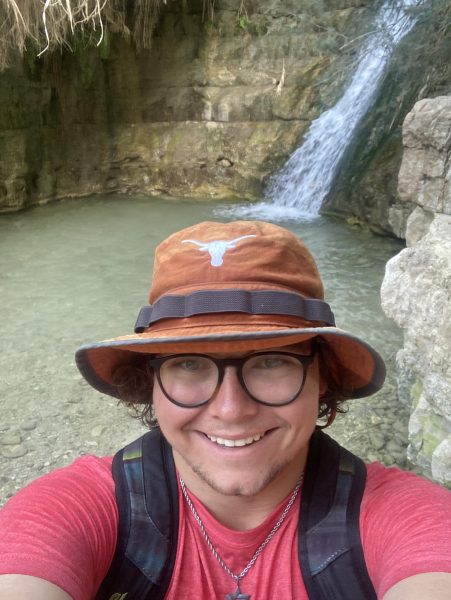For many people who know me, one of the first things that comes up is that I’m a proudly enrolled member of the Oglala Lakota Sioux Tribe (Oglala Lakota Oyate). I’m proud to be Native, and I’m proud to be enrolled. On this side of my family, I’m also a seventh generation rancher who has participated in rodeo events. This juxtaposition causes my family to refer to ourselves as “Cowboys who are Indians.” For most of my life, this combination of worlds wasn’t terribly difficult to reconcile. Sure, there were instances where you went to a rodeo that was named after a U.S. general who committed genocide against my people, but that was practically the extent of the contradiction. In western South Dakota, where I live, almost anyone who’s involved in “western ranching” is usually tribally enrolled with one nation or another. Last summer, however, things became more complicated when I decided to work for the South Dakota Department of Agriculture and Natural Resources analyzing water rights across the West.
I’ve always been raised with a close relationship to my tribe’s reservation, the Pine Ridge Reservation in southwestern South Dakota. Pine Ridge is consistently ranked as one of the poorest counties in the United States. For a bit of geography, Pine Ridge is on the borderlands of the Great Plains and the larger portion of the Rocky Mountain Rain Shadow. It has a population of around 17,000 with around four people per square mile. Commuting from Pine Ridge to “larger” populations is nearly impossible due to the poor maintenance of the roads and the overall isolation of the area. This means that non-agricultural jobs are difficult to come by, and agriculture is almost the only way of making a living for many people on the reservations. Now, if you look at a map of the Pine Ridge Reservation, you’ll notice that it resides on the edge of the Rocky Mountain Rain Shadow, and precipitation is around 12 inches annually. According to the USDA, this average rainfall is half the average annual rainfall of farming areas in the US.
There are potential solutions to make up for the lack of rainwater, such as drip irrigation technology. However, despite its effectiveness, it’s extremely expensive to build such infrastructure without resorting to highly predatory funding mechanisms. Even if you could set up a drip irrigation system, where would the water come from? Though numerous aquifers exist beneath the surface on the reservation, the irrigation required to farm is immense and the costs outweigh the benefits. Even then, the easiest and cheapest forms of water come from the Makhízita wakpá (the White River) where an overwhelming percentage of the land accessing it is held by non-native farmers and ranchers.
Apart from farming crops, The only other form of agriculture that is truly present on the reservation is ranching. Ranching is different from farming because it needs livestock. Ranching is a form of agriculture that requires the combination of different economies of scale but is also restricted by diminishing returns. In other words, it’s better to have more livestock than less; but the more livestock that you have, the more work and more capital is required to maintain a herd. This puts ranchers on Pine Ridge in a position where they need to decide how much cattle they can actually afford to just break even. Unlike many commodities that have a rather standard price, cattle prices are incredibly variable. A case study from the University of Wyoming draws a specific connection between cattle prices and climate change. As the climate continues to warm , cattle prices become more and more variable. This makes the risk calculus for ranchers on the reservation even more precarious, especially for those who lack spare capital.
This is a long and drawn-out way of saying that agriculture, especially on reservations in the Great Plains, is not accessible to tribally enrolled people on the reservations due to high costs. In fact, the Bureau of Indian Affairs reports that 60% of all agricultural land on Pine Ridge is rented out to an overwhelming amount of people who are not affiliated with any nation, and presumably individuals who have more monetary resources and capital compared to the tribally enrolled. In fact, of the roughly 54 million dollars of agriculture commodities produced last year, only a third went to Native farmers and ranchers. It takes only a rudimentary look at previous data to see that climate change is a contributing factor in this disparity. In the past three years, the USDA has released numerous reports analyzing the increase in the amount of capital required to begin ranching and farming and the cost to continue. Climate change, through bringing the Great Plains less moisture, longer dry seasons, harsher winters and change in soil Ph has caused the ability to work on the reservations for tribally affiliated people to become harder and harder. In the last year, the Village Earth estimated that over two-thirds of the total land used on the reservations was owned by non-Native ranchers and farmers. These ranchers and farmers who are not tribally affiliated typically come in with more capital and through predatory lending practices, take up a large swath of usable agricultural land on the reservation. As Lynn Rapp, a tribally affiliated rancher stated “it’s rather ironic that on land literally reserved for us, we don’t even have the majority of ranching land.”
Over this last summer, I got to see, first hand, the increase in the amount of water needed to produce agriculture on the reservation, cattle and agricultural commodity prices decrease and gas prices increase. This squeeze on Native ranchers and farmers is the combination of hundreds of years of horrible policy at the hands of the US federal government, and the actualization of decades of poor climate control. This raises the obvious question of what’s to be done about this crisis in Indian Country. Numerous Indian advocacy groups such as the Native American Rights Fund and several local tribal governments have brought this concern before congress and the local state houses. There’s a growing movement in the United States for the government to “uphold the spirit of tribal sovereignty” to acknowledge the US’s history with the Native Nations that share its geography and begin to reconcile with its past and build a better future. If the US federal government really wants to uphold the spirit of the treaties that they’ve broken, they should start by working on issues that matter to Indian Country, such as agriculture. The US not only needs to address its history of inequality on the reservations, but also how the climate crisis disproportionately affects tribal members and Indian common welfare.










